
User manual
Manuel d'utilisation
Manual del usuario
Benutzerhand??cher
Gebruikershandleidingen
Manuale per l'utente
Anv??ndarhandb??ckerna
Brugermanual

User manual
Manuel d'utilisation
Manual del usuario
Benutzerhand??cher
Gebruikershandleidingen
Manuale per l'utente
Anv??ndarhandb??ckerna
Brugermanual

Important notes for users in the U.K.
Mains plug
This apparatus is fitted with an approved 13 Amp plug. To change a fuse in this type of plug proceed as follows:
1Remove fuse cover and fuse.
2Fix new fuse which should be a BS1362 3 Amp, A.S.T.A. or BSI approved type.
3Refit the fuse cover.
If the fitted plug is not suitable for your socket outlets, it should be cut off and an appropriate plug fitted in its place.
If the mains plug contains a fuse, this should have a value of 3 Amp. If a plug without a fuse is used, the fuse at the distribution board should not be greater than 3 Amp.
Note: The severed plug must be disposed of to avoid a possible shock hazard should it be inserted into a 13 Amp socket elsewhere.
How to connect a plug
The wires in the mains lead are coloured with the following code: blue = neutral (N), brown = live (L).
??As these colours may not correspond with the colour markings identifying the terminals in your plug, proceed as follows:
???Connect the blue wire to the terminal marked N or coloured black.
???Connect the brown wire to the terminal marked L or coloured red.
???Do not connect either wire to the earth terminal in the plug, marked E (or e) or coloured green (or green and yellow).
Before replacing the plug cover, make certain that the cord grip is clamped over the sheath of the lead - not simply over the two wires.
Copyright in the U.K.
Recording and playback of material may require consent. See Copyright Act 1956 and The Performer???s Protection Acts 1958 to 1972.
Italia
DICHIARAZIONE DI CONFORMITA???
Si dichiara che l???apparecchio MCD510 Philips risponde alle prescrizioni dell???art. 2 comma 1 del D.M. 28 Agosto 1995 n. 548.
Fatto a Eindhoven
Philips Consumer Electronics
Philips, Glaslaan 2
5616 JB Eindhoven,The Netherlands
Norge
Typeskilt finnes p?? apparatens underside.
Observer: Nettbryteren er sekundert innkoplet. Den innebygde netdelen er derfor ikke frakoplet nettet s?? lenge apparatet er tilsluttet nettkontakten.
For ?? redusere faren for brann eller elektrisk st??t, skal apparatet ikke utsettes for regn eller fuktighet.
CAUTION
Use of controls or adjustments or performance of procedures other than herein may result in hazardous radiation exposure or other unsafe operation.
VAROITUS
Muiden kuin t??ss?? esitettyjen toimintojen s????d??n tai asetusten muutto saattaa altistaa vaaralliselle s??teilylle tai muille vaarallisille toiminnoille.
2

3
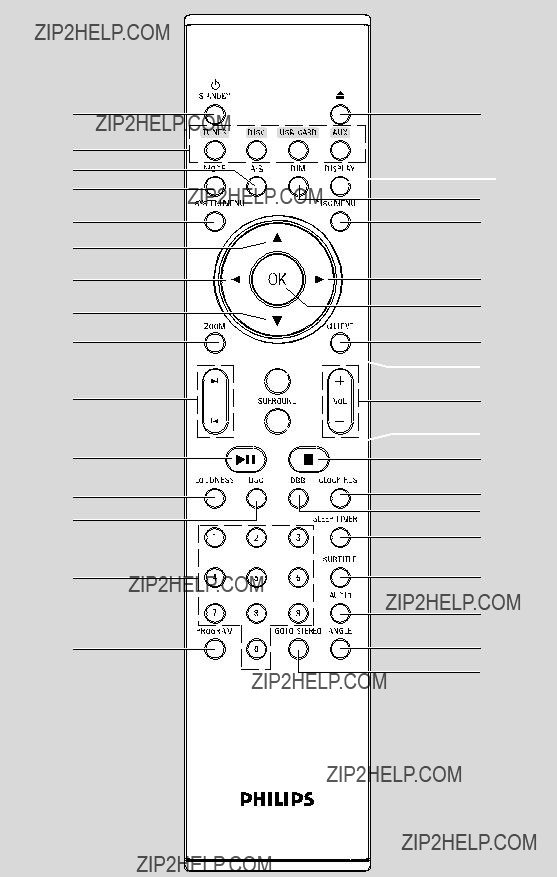
1
4
???
$
5
8
7
8
???
0
@
&
*
2
3
4
??
 ??
??
??
6
7
9
??

 )
)
#
 ???
???
!
???
(
^
%
???
??
???
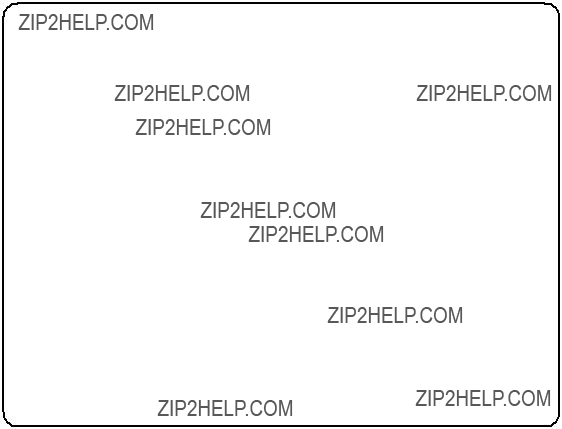
DK
Advarsel: Usynlig laserstr??ling ved ??bning n??r sikkerhedsafbrydere er ude af funktion. Undg?? uts??ttelse for str??ling.
Bem??rk: Netafbryderen er sekund??rt indkoblet og ofbryder ikke str??mmen fra nettet. Den indbyggede netdel er derfor tilsluttet til lysnettet s?? l??nge netstikket sidder i stikkontakten.
S
Klass 1 laseraparat
Varning! Om apparaten anv??nds p?? annat s??tt ??n i denna bruksanvisning specificerats, kan anv??ndaren uts??ttas f??r osynlig laserstr??lning, som ??verskrider gr??nsen f??r laserklass 1.
Observera! St??mbrytaren ??r sekund??rt kopplad och bryter inte str??mmen fr??n n??tet. Den inbyggda n??tdelen ??r d??rf??r ansluten till eln??tet s?? l??nge stickproppen sitter i v??gguttaget.
SF
Luokan 1 laserlaite
Varoitus! Laitteen k??ytt??minen muulla kuin t??ss?? k??ytt??ohjeessa mainitulla tavalla saattaa altistaa k??ytt??j??n turvallisuusluokan 1 ylitt??v??lle n??kym??tt??m??lle lasers??teilylle.
Oikeus muutoksiin varataan. Laite ei saa olla alttiina
Huom.Toiminnanvalitsin on kytketty toisiopuolelle, eik?? se kytke laitetta irti s??hk??verkosta. Sis????nrakennettu verkko- osa on kytkettyn?? s??hk??verkkoon aina silloin, kun pistoke on pistorasiassa.
5

Language Code
6

English ran??ais
"Dolby", "Pro Logic" and the
This product incorporates copyright protection technology that is protected by method claims of certain U.S. patents and other intellectual property rights owned by Macrovision Corporation and other rights owners. Use of this copyright protection technology must be authorized by Macrovision Corporation, and is intended for home and other limited viewing uses only unless otherwise authorized by Macrovision Corporation. Reserve engineering
. or disassembly is prohibited.
DivX, DivX Certified, and associated logos are trademarks of DivXNetworks, Inc and are used under license.
F
Espa??ol
Deutsch
Nederlands
Italiano
Svenska
Dansk
Windows Media is a trademark of Microsoft Corporation.
7

Contents
English
8

Contents
English
9

English
General Information
Features
Your DVD Micro Theatre with 2.1 channel full digital amplifier creates the same dynamic sound qualities that you find in
Other features include:
Additional Component Connections
Lets you connect other audio and audio/visual components to the system so you can use the system???s surround sound speakers.
Parental control (rating level)
Lets you set a rating level so that your children cannot watch a DVD that has a rating higher than you set.
Sleep timer
Enables the system to switch to standby mode automatically at a preset time.
Night Mode
Lets you compress the dynamic range, reducing the difference in loudness between different sounds in Dolby Digital mode.
Progressive Scan
Provides high quality
Note:
??? To fully enjoy the progressive scan feature, you need a progressive scan TV.
Discs for playback
Your DVD System will play:
???Digital Video Discs (DVDs)
???Video CDs (VCDs)
???Super Video CDs (SVCDs)
???Digital Video Discs + Rewritable (DVD+RW)
???Compact Discs (CDs)
???Picture (Kodak, JPEG) files on CDR(W)
???Windows Media Audio (WMA)
???DivX(R) disc on
???DivX 3.11, 4.x and 5.x
???Supported
???ISO 9660 / UDF format
???Max. title/album name
???Max. title number plus album is 255.
???Max. nested directory is 8 levels.
???The max. album number is 32.
???The max. MP3 track number is 999.
???Supported sampling frequencies for MP3 disc: 32 kHz, 44.1 kHz, 48 kHz.
???Supported
The following formats can???t be supported
???The files like *.VMA, *.AAC, *.DLF, *.M3U, *.PLS, *.WAV,
???The discs recorded under Joliet format
Region Codes
DVDs must be labeled as shown below in order to play on this DVD system.You cannot play discs that are labeled for other regions.
Notes:
???For mixed mode discs, only one mode will be selected for playback according to the recording format.
???If you are having trouble playing a certain disc, remove the disc and try a different one. Improperly
formatted discs will not play on this system.
10

General Information/Maintenance
Supplied accessories
???A/V cord (R/W/Y)
???Component video cables (red/blue/green)
???FM wire antenna
???External video box
???Power cord
???
???Stand
???Remote Control and two AAA batteries
???This instruction booklet and a quick start guide
Environmental information
All unnecessary packaging has been omitted.We have tried to make the packaging easy to separate into three materials: cardboard (box), polystyrene foam (buffer) and polyethylene (bags, protective foam sheet).
Your system consists of materials which can be recycled and reused if disassembled by a specialised company. Please observe the local regulations regarding the disposal of packaging materials, exhausted batteries and old equipment.
Care and safety information
Avoid high temperatures, moisture, water and dust
???Do not expose the system, batteries or discs to humidity, rain, sand or excessive heat (caused by heating equipment or direct sunlight).
???No objects filled with liquids, such as vases, shall be placed on the apparatus.
???No naked flame sources, such as lighted candles, should be placed on the apparatus.
???The apparatus shall not be exposed to dripping or splashing.
Do not block the vents
???Do not operate the system in an enclosed cabinet and allow about 10 cm (4 inches) of free space all around the player for adequate ventilation.
???The ventilation should not be impeded by covering the ventilation openings with items, such as newspapers
Cleaning the cabinet
???Use soft cloth slightly moistened with a mild detergent solution. Do not use a solution containing alcohol, spirits, ammonia or abrasives.
Cleaning discs
???To clean a CD, wipe it in a
straight line from the center towards the edge using soft and
???Write only on the printed side of a CDR(W) and only with a soft
???Handle the disc by its edge. Do not touch the surface.
Finding a suitable location
???Place the player on a flat, hard, stable surface.
???Install this unit near the AC outlet and where the AC power plug can be reached easily.
English
Avoid condensation problem
???The lens may cloud over when the player is suddenly moved from cold to warm surroundings, making it impossible to play a disc. Leave the player in the warm environment until the moisture evaporates.
11

IMPORTANT!
???The type plate is located at the rear of the system.
???Before connecting the AC power cord to the wall outlet, ensure that all other connections have been made.
???Never make or change any connections with the power switched on.
???High voltage! Do not open.You run the risk of getting an electric shock.
???The machine does not contain any
???Modification of the product could result in hazardous radiation of EMC or other unsafe operation.
To avoid overheating of the system, a safety circuit has been built in.Therefore, your system may switch to Standby mode automatically under extreme conditions. If this happens, let the system cool down before reusing it (not available for all versions).
Note:
??? Before installation is finished, it is not recommended to remove the protective plastic film attached to the surface of the front panel to avoid any scratch caused during installation.
12

Connect the supplied FM antenna to the FM AERIAL terminal. Fully extend and adjust the position of the antenna for optimal reception.
English
1Place the main set with the front side facing down on a flat and firm surface.Then remove the detachable cover on the back of the set to expose the terminals available for connection.
2Connect the two front speaker cables to the SPEAKER OUT terminals: right speaker to "R" and left speaker to "L".
3Connect one end of the
Notes:
???Ensure that the speaker cables are correctly connected. Improper connections may damage the system due to
???For optimal sound performance, use the supplied speakers.
???Do not connect more than one speaker to any one pair of +/- speaker terminals.
???Do not connect speakers with an impedance lower than the speakers supplied. Please refer to the SPECIFICATIONS section of this manual.
???For better FM stereo reception, connect an outdoor FM antenna to the FM AERIAL (FM ANTENNA) terminal.
Notes:
??? This system does not support MW reception.
13

Installation
English
Step 3: ConnectingTV
IMPORTANT!
???You only need to make one video connection from the following options, depending on the capabilities of yourTV.
???Connect the DVD system directly to theTV.
Using AV OUT jack
1Connect the end of the supplied AV cord with only one connector to the AV OUT jack of the DVD system.
2For the other end, connect the video output connector (yellow) to the video input jack (or labeled as A/ V In, CVBS, Composite or Baseband) on the TV.To hear the sound of this DVD system through your TV, connect the audio connectors (white/ red) to the audio input jacks on the TV.
Using the video box
IMPORTANT!
??? A SCART connection will let you use features both Audio and Video on the DVD Player.
The supplied video box provides you with more TV connection options.
???First connect the
14

Installation
IN
TV IN
VIDEO IN
English
R
1
1Use component video cables (red/blue/green) to connect the COMPOENT VIDEO OUTPUT (Pr/Cr Pb/CbY) jack to the corresponding Component video input jacks (or
labeled as Y Pb/Cb Pr/Cr or YUV) on the TV.
2If you are using a Progressive Scan TV (TV must indicate Progressive Scan or ProScan capability), to activate TV Progressive Scan, please refer to your TV user manual. For DVD system Progressive Scan function, see "Preparations- Setting up Progressive Scan feature".
Note:
??? If your TV does not support Progressive Scan, you will not be able to view the picture.
Press SYSTEM MENU on the remote to exit the system menu and then DISC to exit progressive scan.
???Use the SCART cable (black) to connect the DVD Player???s SCART jack (SCART) to the corresponding Scart input jacks on the TV.
Note:
??? Ensure that the ???TV??? indication on SCART cable is connected to the TV set and ???DVD??? indication on SCART cable is connected to the DVD Player.
15

Installation
English
Step 4: Placing the set and speakers
1After finishing all rear connections, mount the detachable cover on the back of the set until hearing a click to avoid cable clutter.
2Align the side marked PRESS4 of the stand to the slots at the bottom of the set.
3Push the stand down into the slots until you hear a click.
4Place the set upright on the desktop with the support of the stand.
5Extend the bracket on the back of each front speaker as shown so that the front speakers can stand firmly on the desktop.
6Place the subwoofer on the floor near an AC outlet.
Note:
??? To remove the stand from the set, while pressing down PRESS4 , pull the stand out from the slots.
Step 5: Connecting the power cord
After everything is connected properly, plug in the AC power cord to the power outlet.
Never make or change any connection with the power switched on.
Optional: Connecting additional equipment
Listening to the playback of a
device
AUDIO OUT
L R
VCR
(for example)
???Connect the system's
16
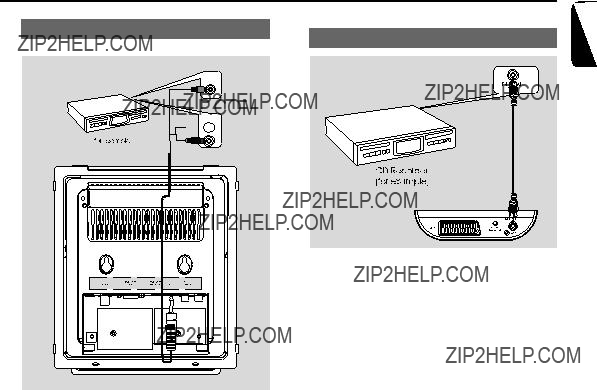
Using the VCR for recording DVDs
Installation
Recording (digital)
English
VIDEO IN
AUDIO IN




 L
L
VCR
R
1Connect the end of the supplied AV cord with only one connector to the A/V OUT jack of the DVD system.
2For the other end, connect the video output connector (yellow) to the VIDEO IN jack on the VCR and the audio connectors (white/ red) to the corresponding audio input jacks on the VCR. This will allow you to make analogue stereo (two channel, right and left) recordings.
???Connect the COAXIAL (DIGITAL OUTPUT) jack on the video box to the DIGITAL IN jack on a digital recording device (such as DTS Digital Theatre compatible, with Dolby Digital decoder).
Before starting operation, set the DIGITAL OUT according to the audio connection. (See "DIGITAL OUT".)
17
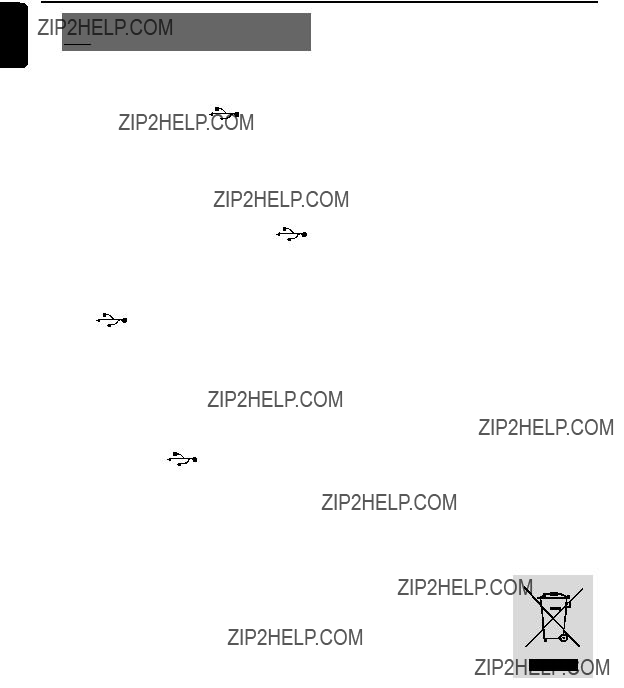
English
Installation
Connecting a USB device or memory
card
IMPORTANT!
??? Before connecting the USB plug, first slide down the movable baffle as shown on Page 3 to expose the jack.
By connecting a USB mass storage device (including USB flash memory, USB flash players or memory cards) to the
???Insert the USB device's USB plug into the socket on the set.
for the devices with USB cables:
1 Insert one plug of the USB cable (not supplied) to the socket on the set.
2Insert the other plug of the USB cable to the USB output terminal of the USB device.
for the memory card:
1Insert the memory card into a card reader (not supplied).
2 Use a USB cable (not supplied) to connect the card reader into the socket on the set.
Disposal of your old product
Your product is designed and manufactured with high quality materials and components, which can be recycled and reused.
When this
Please inform yourself
about the local separate collection system for electrical and electronic products.
Please act according to your local rules and do not dispose of your old products with your normal household waste.The correct disposal of your old product will help prevent potential negative consequences for the environment and human health.
18

Controls
Controls on the system
1 ECO POWER/STANDBY ON B
???to switch the system on or to Eco power/normal standby mode.
2 iR sensor
???infrared sensor for remote control.
3 PROGRAM
???
???Picture CD: during playback, to select a slide show mode.
???Tuner: programs preset radio stations.
4Mode Selection
9 ............................. In DISC/USB mode, to stop playback or clear a program.
PRESET??/??
Disc/USB: skips to the previous/next chapter/ title/track.
Tuner: selects a preset radio station.
TUNING 22/33
Tuner
???press to tune to a lower/higher radio frequency gradually.
???press and hold, then release the key to start automatic search for a radio frequency downward/upward.
Disc/USB
???searches fast backward/forward.
5 Display screen
???to view the current status of the system.
6 SOURCE
???to select the respective sound source :TUNER,
DISC, USB/CARD or AUX.
7 VOLUME
???adjusts the volume upward/downward.
???adjusts the hours and minutes in clock/timer setting mode.
???selects a source in timer setting mode.
8 n
??? to connect a headphone.
9 EJECT
???ejects a disc from the disc loader.
0
???connects an external
!  USB DIRECT
USB DIRECT
???jack for the external USB mass storage device.
@ SLIDE OPEN 4
???slides down to expose some buttons and jacks on the front panel.
Controls on the remote control
1 STANDBY y
???to switch the system on or to Eco power/normal standby mode.
2 Numeric Keypad
???inputs a track/title/chapter number of the disc.
3 PROGRAM
???
???Picture CD: during playback, to select a slide show mode.
???Tuner: programs preset radio stations.
4 SOURCE
???to select the respective sound source :TUNER, DISC, USB/CARD or AUX.
5 SYSTEM MENU (disc mode only)
???to enter or exit the system menu bar.
6 DISC MENU (disc mode only)
???DVD/VCD: enters or exits the disc contents menu.
???VCD2.0: switches the playback control mode on or off .
72/3
Tuner
???press to tune to a lower/higher radio frequency gradually.
???press and hold, then release the key to start automatic search for a radio frequency downward/upward.
Disc/USB
???searches fast backward/forward.
???In DISC mode, to select a movement direction in the disc menu or system menu bar.
8 3/4
???In DISC mode, to select a movement direction in the disc menu or system menu bar.
???selects different slow playback modes for a VCD/ SVCD/DVD.
English
* = Press and hold the button for more than three seconds.
19

Controls
English
9 OK
???to exit or confirm the selection.
0 ??/??
???Disc: skips to the previous/next chapter/title/ track.
???Tuner: selects a preset radio station.
! 9
???In DISC/USB mode, to stop playback or clear a program.
@ 2;
???In DISC/USB mode, to start or interrupt playback.
# VOL +/-
???adjusts the volume upward/downward.
???adjusts the hours and minutes in clock/timer setting mode.
???selects a source in timer setting mode.
$ MODE
???selects various repeat modes or the shuffle play mode for a disc.
% SUBTITLE
???selects a subtitle language.
^ SLEEP/TIMER
Standby mode
???sets time for switching on the system automatically.
???sets the sleep timer function (auto off).
& LOUDNESS
???enables or disables automatic loudness adjustment.
* DSC
???selects different types of preset sound equalizer settings (CLASSIC, JAZZ, ROCK, POP or FLAT; for DVD: NORMAL, CONCERT, DRAMA, ACTION or
( DBB
???enables or disables bass enhancement.
) MUTE
???to interrupt or resume sound reproduction.
?? DISPLAY
??? displays information on TV screen during
playback.
???
???for VCD/CD/USB: to repeat a specific section within the same track.
???for DVD: to repeat a specific section in a disc.
?? DIM
???selects different levels of brightness for the display screen.
??? AUDIO
for VCD
???sets Stereo,
for DVD
???selects an audio language.
??? ZOOM
???DVD/VCD/Picture CD: enlarges or reduces a picture or active image on the TV screen.
?? ANGLE
???selects a DVD camera angle.
??? GOTO/STEREO
???In DISC mode, to fast search in a disc by entering a time, title, chapter or track.
???FM: sets stereo or mono sound mode.
??? CLOCK/RDS
Standby mode
*??? sets the system clock. Playback mode
???displays the system clock.
For tuner
???displays RDS information.
?? 0
???ejects a disc from the disc loader.
?? CH.LEVEL (unavailable for this version)
???SURROUND (unavailable for this version)
Notes for remote control:
???First, select the source you wish to control by pressing one of the source select keys on the remote control (DISC or TUNER, for example).
???Then select the desired function ( 2;, ??, ?? for example).
* = Press and hold the button for more than three seconds.
20
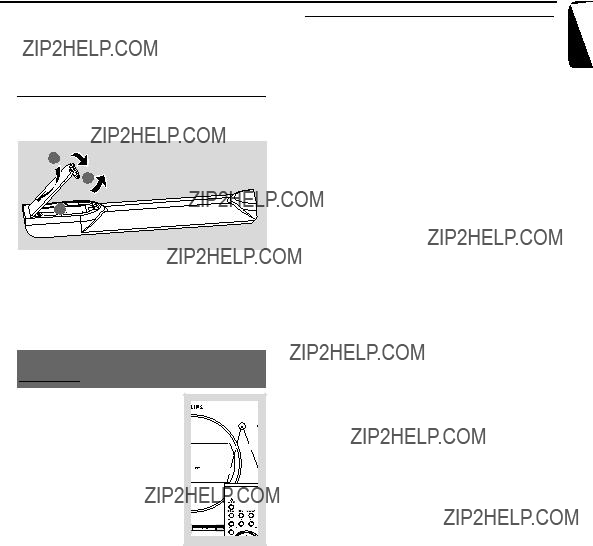
Preparations
IMPORTANT!
??? Make sure to complete the preparation procedures before operating the system.
Step 1: Inserting batteries into the Remote Control
3
1
 2
2


1 Open the battery compartment.
2Insert two AAA batteries following the indications
3 Close the cover.
Using the Remote Control to operate
the Player
1Aim the Remote Control directly at the remote sensor (IR) on the front panel.
2 Do not put any objects between 


 the Remote Control and the
the Remote Control and the
DVD Player while operating the DVD Player.
CAUTION!
???Remove batteries if they are exhausted or if the Remote Control is not being used for a long time.
???Do not use old and new or different types of batteries in combination.
???Batteries contain chemical substances, so they should be disposed of properly.
Step 2: Setting the clock
1 Go to Standby mode.
2Press and hold CLOCK/RDS on the remote. ??? ???CLOCK SET??? is displayed briefly.Then, the hour digits flash on the display screen.
3Press VOLUME
4Press CLOCK/RDS again.
??? The minute digits flash on the display screen.
5Press VOLUME
6Press CLOCK/RDS to confirm the clock setting.
Notes:
???This system only supports
???The clock setting will be erased when the system is disconnected from the power supply.
???The system will exit clock setting mode if no button is pressed within 30 seconds.
English
21

Preparations
English
Step 3: Setting video preference
IMPORTANT!
??? Make sure you have completed all the necessary connections. (See
Turn on the TV set and set it to the correct
???You may go to channel 1 on your TV set, then press the channel button repeatedly until you see the Video In channel.
???Or, you can use the TV remote control to select different video modes.
???Or, set TV to channel 3 or 4 if you are using an RF modulator.
???Setting TV TYPE
Select the aspect ratio of the TV to be connected.
4:3 PS (Pan and Scan mode )
??? If you have a conventional TV set and your DVD is not formatted for widescreen viewing, use this setting. A wide picture is displayed on the whole TV screen with a portion automatically cut off.
4:3 LB (Letterbox mode )
??? If you have a conventional TV set and your DVD is formatted for widescreen viewing, use this setting. A wide picture with bands displayed on the upper and lower portions of the TV screen.
1In stop mode or during playback, press
SYSTEM MENU.
2Press 2/3/5/4 on the remote control to toggle through the functions and select your preferential option.
???Move to SYSTEM SETUP and press 4.
???Move to one of the following and press 3.
???Setting TV SYSTEM
Allows you to select the colour system matching the connected TV set.
NTSC
??? If the connected TV is NTSC system, select this mode. It will change the video signal of a PAL disc and output in NTSC format.
PAL
??? If the connected TV is PAL system, select this mode. It will change the video signal of a NTSC disc and output in PAL format.
AUTO
??? If the connected TV is multi system, select this mode.The output format will be in accordance with the video signal of the disc.
16:9 (Wide screen mode)
??? If you have a widescreen TV set, use this setting (you must also set your widescreen TV to ???full size???) available on a disc, then the disc???s own preference will be used.
Note:
The format you select must be available on the disc. If it is not, the setting for TV Type will not affect the picture during playback.
To exit the menu
Press SYSTEM MENU again.
22
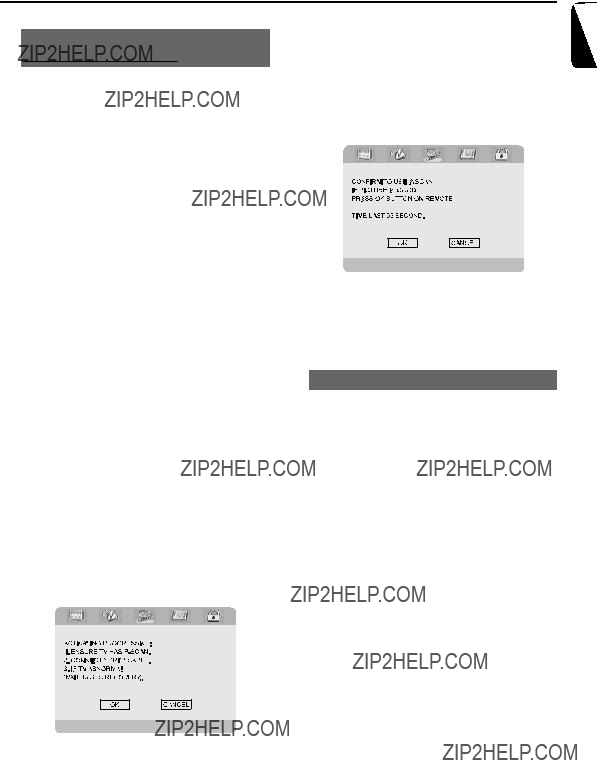
There will be a distorted picture on your TV at this state until you turn on the progressive scan mode on your TV.
9Turn on your TV progressive scan mode (refer to your TV user manual).
??? The below menu appears on the TV.
0Press 1 2 to highlight OK in the menu and press OK to confirm.
??? The setup is complete now and you can start enjoy the high quality picture.
To deactivate Progressive manually
??? When the distorted sign still appears on theTV, it may be due to the connected TV does not accept progressive signals, and progressive is set by mistake.You must reset the unit to interlace format.
1Turn off your TV progressive scan mode or turn on to interlaced mode (refer to your TV user manual).
2Press SYSTEM MENU on the remote to exit the system menu and then DISC to exit progressive scan.
??? The DVD blue background screen will appear.
23
English

Preparations
English
Step 4: Setting language preference
You can select your preferred language settings so that this DVD Micro System will automatically switch to the language for you whenever you load a disc. If the language selected is not available on the disc, the language set by default will be used instead. But the menu language of the DVD Micro System cannot be changed once selected.
1In stop mode or during playback, press
SYSTEM MENU.
2Press 2/3/5/4 on the remote control to select your preferred option.
???Move to LANGUAGE SETUP and press
4.
???Move to one of the following and press 3.
OSD LANGUAGE
AUDIO LANG (DVD only)
Switches the display language of the sound track. Select the language from the displayed list.
SUBTITLE LANG (DVD only) Switches the display language of the subtitle. Select the language from the displayed list.
MENU LANG (DVD only)
Select the language for the DVD menu.
When the selected language is not recorded in the DVD, one of the recorded languages will be selected automatically (except for OSD).
You can reset all the DVD settings except for Rating.
If the language selected is not available on the disc, the original language designated by each disc will be selected.
3 Press 5/4 to select a language and press OK.
4Repeat steps 2~3 for other settings.
To exit the menu
Press SYSTEM MENU again.
24

Basic Functions
Switching the system on/off
???Press ECO
(STANDBY B on the remote).
??????HELLO??? is displayed briefly.The system will switch to the last selected source.
???Press DISC, TUNER or AUX on the remote.
???The system will switch to the selected source.
To switch the system to standby mode
???Press ECO
(STANDBY B on the remote).
??? The interactive sound settings, last selected source and tuner presets will be retained in the player???s memory.
Switching the system to Eco Power Standby mode
???Press ECO
??? The system enters Eco power standby (the ECO POWER LED is on) or normal standby with clock display.
???The volume level (up to a maximum volume level of 12), interactive sound settings, last selected mode, source and tuner presets will be retained in the player's memory.
???If the system is normal standby with clock display, press and hold ECO POWER/STANDBY- ON Bfor 3 seconds or more to switch to Eco power standby or vice versa.
As a
Sound Control
DBB, DSC and LOUDNESS sound features cannot be activated at the same time.
DBB (Dynamic Bass Boost)
DBB enhances the bass response.
??? Some discs might be recorded in high modulation, which causes a distortion at high volume. If this occurs, switch off DBB or reduce the volume.
DSC (Digital Sound Control)
DSC provides a different type of preset sound equalizer setting.
???Press DSC on the remote repeatedly to select: CLASSIC, JAZZ, ROCK, POP or FLAT (for DVD: NORMAL, CONCERT, DRAMA, ACTION or
LOUDNESS
LOUDNESS feature enables the system to automatically increase the treble and bass sound effect at low volume (the higher the volume, the lower the treble and bass increase).
???Press LOUDNESS on the remote to enable or disable LOUDNESS feature.
???icon appears/disappears after this feature is enabled/disabled.
???LOUD ON or LOUD OFF is displayed.
Volume control
Press VOLUME
??? ???VOLUM XX??? is displayed on the display panel.???XX??? denotes the volume level.
To listen through the headphone
???Connect the headphone plug to the nsocket on the front panel of the DVD player.
??? The speakers will be muted.
To switch off the volume temporarily
???Press MUTE on the remote.
??? Playback will continue without sound and ???MUTING??? flashes.
???To activate sound reproduction, you can:
??? press MUTE again;
??? adjust the volume controls;
??? change source.
English
25

Disc Operations
English
IMPORTANT!
???This system is designed for regular discs.Therefore, do not use any accessories such as disc stabiliser rings or disc treatment sheets, etc., as offered on the market, because they may jam the disc mechanism.
???Do not move the system during playback. Doing so may damage the system.
???DVD discs and players are designed with regional restrictions. Before playing a disc, make sure the disc matches the regional code of your player.
???According to the format requirement of DVD or VCD, some operations may be different or restricted.
???Do not push on the disc tray or put any objects other than disc in the slot loader. Doing so may cause the disc player malfunction.
???If  appears on the TV screen when a
appears on the TV screen when a
Using the disc menu
For disc with Table Of Contents, a menu may appear on the TV screen once you load the disc.
To select a playback feature or item
OK or Numeric Keypad
button is pressed, it means the function is not available on the current disc at the current time.
Playing discs
1Connect the power cords of the system and TV (or any optional stereo or AV receiver) to a power outlet.
2Turn on the TV power and set to the correct Video In channel. (See "Setting up the TV".)
3Press
??? You should see the blue Philips DVD background screen on the TV.
4Insert a disc into the slot loader.
???Make sure the label side is facing you.
???Make sure you have removed any other disc from the slot loader.
5Playback will start automatically (depending on the disc type).
???If a disc menu appears on the TV, see "Using the Disc Menu".
???If the disc is locked by parental control, you must enter your
6 At any time, simply press 9 to stop playback.
26
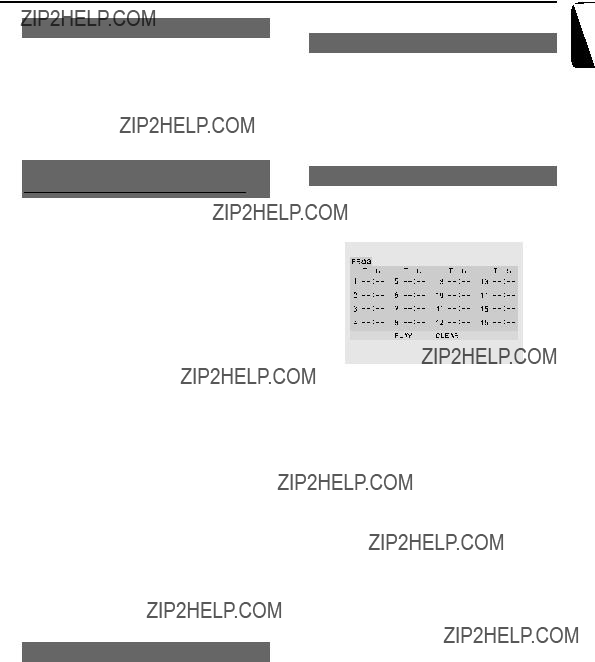
Disc Operations
Zoom (DVD/VCD/JPEG)
Zooming allows you to enlarge or reduce the video image during playback.
1Press ZOOM repeatedly to enlarge or reduce the playback video image.
2Press 22/33/5/4 to pan across the TV screen.
Differnt play modes: SHUFFLE and
REPEAT (DVD/VCD/CD/MP3/WMA)
???Press REPEAT repeatedly to choose a repeat mode during playback.
For DVD
CHAPTER
??? to repeat playback of the current chapter.
TITLE
??? to repeat playback of the current title.
OFF
??? switches off the repeat mode.
For VCD/MP3/CD
REP 1
??? to repeat playback of the current track.
REP ALL
??? to repeat playback of the whole disc.
REPEAT ALL SHUFFLE
??? to play the whole disc repeatedly in random order.
OFF
??? switches off the repeat mode.
Repeat
1 Press
2Press
???The section A and B can be set only within the same chapter/track.
???The section will now repeat continuously.
3To exit the sequence, press
Slow Motion (DVD/VCD)
1Press 5/4 on the remote during playback to select the required forward speed: 1/2, 1/3, 1/4, 1/5, 1/6 or 1/7.
??? Sound will be muted.
2 To return to normal speed, press 2;.
Program (not for Picture CD)
To select favourite tracks/chapters for playback in preferred sequence.
1 Press PROGRAM to enter the program mode.
2Use the Numerical Keypad
3Move the cursor by pressing 2/3/5/4 to select PLAY.
4 Press OK to start playback.
English
27

Disc Operations
English
Forward/Reverse Searching (DVD/VCD/
CD/MP3/WMA)
1Press TUNING 22/33 (2/3 on the remote) during playback to select the required speed: X2, X4, X8 or X20 (backward or forward).
??? Sound will be muted.
2To return to normal speed, press PLAY/ PAUSE 2;.
Time search & search by chapter/track
number (DVD/VCD/CD/MP3/WMA)
1Press GOTO/STEREO until the time or chapter/track edit box appears.
2Enter hours, minutes and seconds from left to right in the time edit box using the Numeric Keypad
OR
Enter your desired chapter/track number in the chapter/track edit box using the Numeric Keypad
Information display during playback
(DVD/VCD/CD/MP3/WMA)
???During playback, press DISPLAY to show disc information on the TV screen.
For DVD/VCD/CD
???Elapsed playback time of the current track/ title.
???Remaining playback time of the current track/ title.
???Total playback time of the whole disc.
???Elapsed playback time of the whole disc.
???Display off.
OR
???Remaining playback time of the current track/ title.
???Elapsed playback time of the whole disc.
???Remaining playback time of the whole disc.
???Display off.
For MP3 CD
???Elapsed playback time of the current track.
???Remaining playback time of the current track.
Special disc features
Playing a Title (DVD)
1Press DISC MENU.
??? The disc title menu appears on the TV screen.
2 Use 2/3/5/4 to select a play option.
3 Press OK to confirm.
Camera Angle (DVD)
???Press ANGLE repeatedly to select different desired angle.
Changing the Audio Language (for DVD
recorded with multiple languages)
???Press AUDIO repeatedly to select different audio languages.
Changing the Audio Channel (for VCD
only)
???Press AUDIO to select the available audio channels provided by the disc (Mono Left, Mono Right or Stereo).
Subtitles (DVD)
???Press SUBTITLE repeatedly to select different subtitle languages.
28
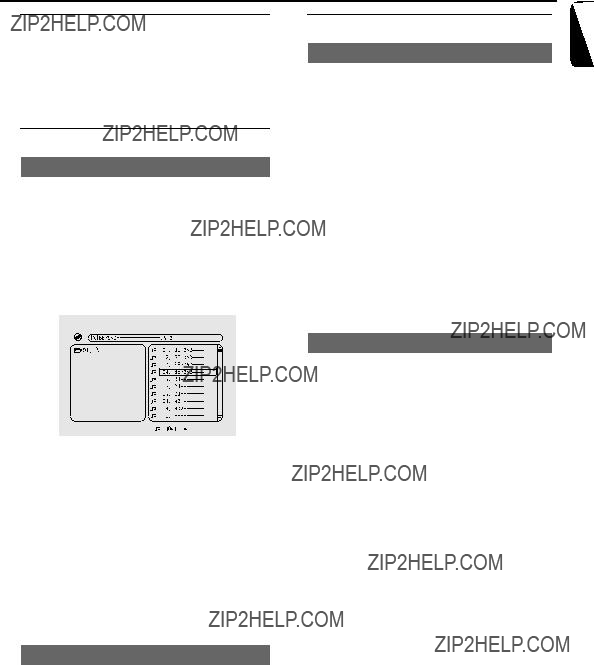
Disc Operations
English
IMPORTANT!
??? You have to turn on yourTV and set to the correct Video In channel. (See "Setting up the TV".)
Playing MP3/WMA disc
General operation
1Load an MP3/WMA disc.
??? A data disc menu appears on the TV screen and playback starts automatically from the first track.
2Press 2 to move to the album column on the left of the TV screen, then use 5/4 to select an album and press OK to open it.
3Press 3 to move to the track column on the right of the TV screen and then use 5/4 to highlight a track; or directly use the Numeric Keypad
4Press OK to confirm.
??? The playback will start from the selected track to the end of the album.
Note:
The disc reading time may exceed 10 seconds due to large number of songs compiled onto the disc.
Playback selection
During playback, you can:
???Press PRESET??/?? to select another track in the current album.
???Press 2; repeatedly to pause/resume playback.
General operation
1Load a JPEG Picture CD.
??? A data disc menu appears on the TV screen and playback starts automatically from the first file.
2Press 2 to move to the folder column on the left of the TV screen, then use 5/4 to select a folder and press OK to open it.
3 Press 3 to move to the file column on the right of the TV screen and then use 5/4 to highlight a file; or directly use the Numeric Keypad (0- 9) to input a file number.
4Press OK to confirm.
??? The playback will start from the selected picture to the end of the folder.
Playback selection
During playback, you can:
???Press PRESET??/?? to select another file in the current folder.
???Use 2/3/5/4 on the remote to rotate/flip the picture files.
???Press 2; repeatedly to pause/resume playback.
???Press 9 to stop playback and return to the disc content menu.
29

Disc Operations
English
Special JPEG features
Zoom picture (JPEG)
???During playback, press ZOOM repeatedly to display the picture with different scales (2, 3, 4, 1/ 2, 1/3, 1/4 and OFF).
???Use 2/3/5/4 to view the zoomed picture.
Slide show playback modes (JPEG)
???During playback, press PROGRAM repeatedly to select different
Mode 1:WIPE TOP
Mode 2:WIPE BOTTOM
Mode 3:WIPE L
Mode 4:WIPE R
Mode 5: DIAGONAL L TOP
Mode 6: DIAGONAL R TOP
Mode 7: DIAGONAL L BOTTOM
Mode 8: DIAGONAL R BOTTOM
Mode 9: EXTEND CENTER H
Mode 10: EXTEND CENTER V
Mode 11: COMPRESS CENTER H
Mode 12: COMPRESS CENTER V
Mode 13:WINDOW H
Mode 14:WINDOW V
Mode 15: EDGE TO CENTER
Mode 16: RANDOM
Playback with
???During playback, press 2/3/5/4 to rotate the picture on the TV screen.
5: flip the picture vertically.
4: flip the picture horizontally.
2: rotate the picture
3: rotate the picture clockwise.
Playing a DivX disc
This DVD player supports the DivX movie playback that you download from your computer onto a
1Load a DivX disc.
??? Playback will start automatically. If not press
????.
2If the DivX movie contains external subtitles, the subtitle menu will appear on the TV screen for your selection.
???In this case, pressing SUBTITLE on the remote control will turn on or off the subtitle.
???If multilingual subtitles are embedded on the DivX disc, pressing SUBTITLE will change the subtitle language during playback.
Note:
???Subtitle files with the following filename extensions (.srt, .smi, .sub, .ssa, .ass) are supported but do not appear on the file navigation menu.
???The subtitle filename have to be the same as the filename of the movie.
30
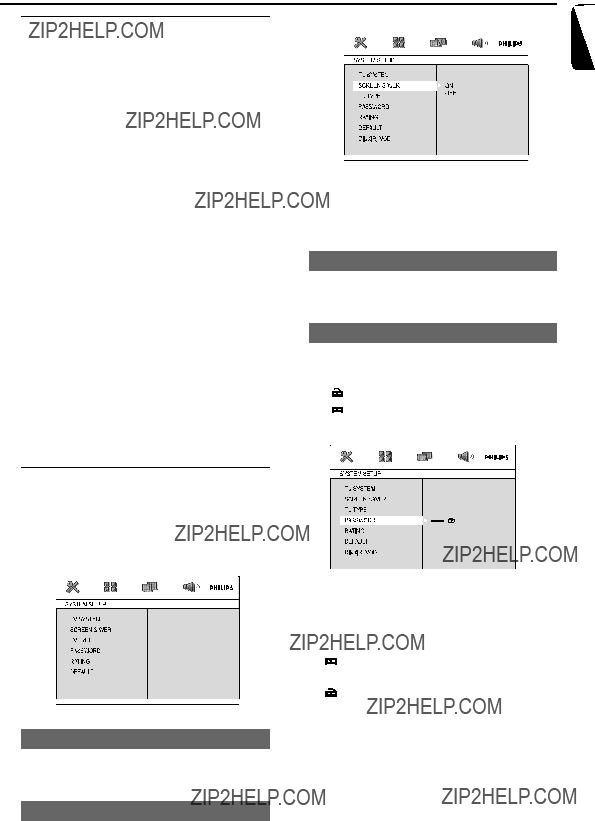
System Menu Options
Basic operations
1Press SYSTEM MENU to enter the Setup Menu.
2 Press 2/3 to select a page to be set.
3 Press 5/4 to highlight an option.
4 Enter its submenu by pressing 3 or OK.
5Move the cursor by pressing 5/4 to highlight the selected item.
??? In cases of value setting, press 5/4 to adjust values.
6 Press OK to confirm.
To return to the
???Press 2.
To exit from the menu
???Press SYSTEM MENU again.
??? The settings will be stored in the player???s memory even if the player is switched off.
Note:
??? Some of the features in the System Menu Options are described in ???Preparations???.
SYSTEM SETUP
The options included in SYSTEM SETUP page are:???TV SYSTEM???,???SCREEN SAVER???, ???TV TYPE???, ???PASSWORD???, ???RATING???,???DEFAULT???and ???DIVX(R) VOD???.
???ON: In STOP, PAUSE or No DISC mode, if no actions are performed about 3 minutes, the screen saver will be activated.
???OFF: Screen saver is disabled.
TV TYPE
See
PASSWORD
You can enter your
???" " is displayed if rating control is activated.
???"  " is displayed if rating control is deactivated.
" is displayed if rating control is deactivated.
English
DIVX(R) VOD
TV SYSTEM
See
SCREEN SAVER
This function is used to turn the screen saver on or off.
To change password
1Move to "PASSWORD" and press 3 or OK to enter its submenu.
2 If "  " is displayed, enter the default password (0000) and press OK to unlock.
" is displayed, enter the default password (0000) and press OK to unlock.
???If " " is displayed, directly proceed with Step 2 and 3
3Enter your new
Numeric Keypad
4Press OK to confirm and the new password takes effect.
Note:
??? The default password (0000) is always active even if the password has been changed.
31

System Menu Options
English
RATING
Some DVDs may have a parental level assigned to the complete disc or to certain scenes on the disc.This feature lets you set a playback limitation level.
The rating levels are from 1 to 8 and are country dependent.You can prohibit the playing of certain discs that are not suitable for your children or have certain discs played with alternative scenes.
???VCD, SVCD and CD have no level indication, so parental control function has no effect on those kinds of discs.This applies to most illegal DVD discs.
1 Press 5/4 to highlight ???RATING???.
2 Enter its submenu by pressing 3.
3Use 5/4 to highlight a rating level for the disc inserted.
??? DVDs that are rated above the level you selected will not play unless you enter your four- digit password and choose a higher level rating.
Note:
??? Some DVDs are not encoded with a rating though the movie rating may be printed on the Disc cover.The rating level feature does not work for such Discs.
Rating explanations
1 KID SAFE
??? Suitable for children.
2 G
??? General Audience; recommended as acceptable for viewers of all ages.
3 PG
??? Parental Guidance suggested.
4 PG 13
???Material is unsuitable for children under age
13.Parental Guidance suggested.
???Parental Guidance ??? Restricted; recommended that parents restrict children under 17 from viewing or allow them to view only when supervised by a parent or adult guardian.
7
???No children under age 17; not recommended for children under age 17.
8 ADULT
???Material for adults only; viewed only by adults due to graphic sexual scenes, violence, or language.
DEFAULT
Setting the ???Default??? function will reset all options and your personal settings to the factory defaults and all your personal settings will be erased.
1 Press 5/4 to highlight ???DEFAULT???.
2 Highlight ???RESTORE??? by pressing 3.
3Press OK to confirm selection.
Caution!
??? When this function is activated, all settings will be reset to factory defaults.
32

DIVX(R)VOD registration code
System Menu Options
VIDEO SETUP
English
Philips provides you the DivX?? VOD (Video On Demand) registration code that allows you to rent and purchase videos using the DivX?? VOD service.
For more information, visit us at www.divx.com/ vod.
1In SYSTEM SETUP page, press 3 4 to highlight DIVX(R) VOD, then press 3 or OK to enter its submenu and press OK again to confirm.
??? The registration code will appear.
The options included in VIDEO SETUP page are: "COMPONENT", "TV MODE", "BRIGHTNESS", "CONTRAST", "HUE" and "SATURATION".
7SIYHQSG
DONE
2 Press OK to exit.
3Use the registration code to purchase or rent the videos from DivX?? VOD service at www.divx.com/vod. Follow the instructions and download the video onto a
Notes:
???All the downloaded videos from DivX?? VOD can only be played back on this DVD player.
???Time search feature is not available during DivX movie playback.
LANGUAGE SETUP
The options included in LANGUAGE SETUP page are: "OSD LANGUAGE", "AUDIO LANG", "SUBTITLE LANG" and "MENU LANG".
See
COMPONENT
Sets the video output according to your video connection.This setting is not required if you are using the VIDEO OUT jack (yellow) to connect the DVD micro system to your TV.
???Pr/Cr Pb/CbY: Select this if you have connected the DVD micro system to your TV using Component video jacks.
???SVIDEO: Select this if you have connected the DVD micro system to your TV using
???
TV MODE
Selects interlace or
???
In the progressive scan mode, you can enjoy the high quality picture with less flickers. It only works when you have connected the DVD player's Y Pb Pr jacks to your TV that supports the progressive video input. Otherwise, a distorted picture will appear on the TV. For proper progressive scan set up, see
33
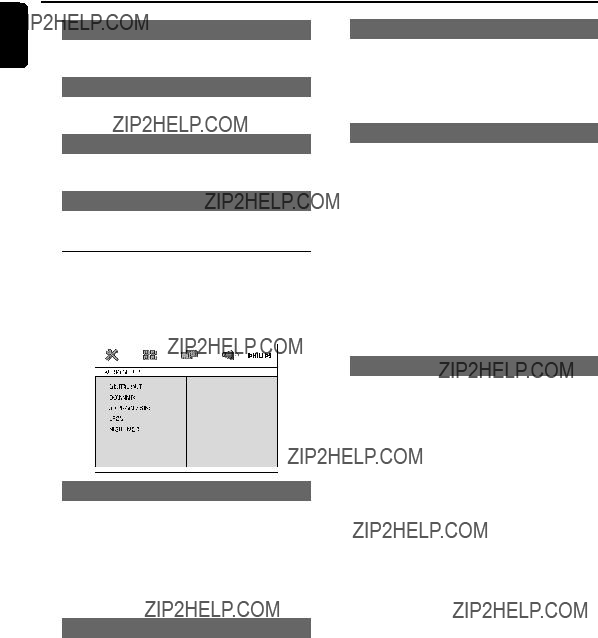
System Menu Options
English
BRIGHTNESS
Adjusts the brightness level. Range:
CONTRAST
Adjusts the contrast level. Range:
HUE
Adjusts the hue level. Range:
SATURATION
Adjusts the saturation level. Range:
AUDIO SETUP
The options included in AUDIO SETUP page are: "DIGITAL OUT", "DOWNMIX", "3D PROCESSING", "LPCM" and "NIGHT MODE".
DIGITAL OUT
???DIGITAL/OFF:Turns off the digital output.
???DIGITAL/RAW: If you have connected your DIGITAL OUT to a
???DIGITAL/PCM: Only if your receiver is not capable of decoding
3D PROCESSING
3D processing provides a virtual surround sound experience using just two speakers.
??? OFF, CONCERT, CHURCH, PASSIVE,
WIDE and LIVE
LPCM
If you connect the DVD Player to a PCM compatible receiver via the coaxial terminal, you may need to adjust 'LPCM'.
Discs are recorded at a certain sampling rate. The higher the sampling rate, the better the sound quality.
???48kHz: Playback a disc recorded at the sampling rate of 48kHz.
???96kHz: Playback a disc recorded at the sampling rate of 96kHz.
???192kHz: Playback a disc recorded at the sampling rate of 192kHz.
NIGHT MODE
???OFF: Select this when you want to enjoy the surround sound with its full dynamic range.
???ON: Select this to level out the volume. High volume outputs will be softened and low volume outputs are brought upward to an audible level.
This feature is only available for movies with Dolby Digital mode.
DOWNMIX
This options allows you to set the stereo analogue output of your DVD Player.
???LT/RT: Select this option if your DVD Player is connected to a Dolby Pro Logic decoder.
???STEREO: Select this option when output delivers sound from only the two front speakers.
???VSS: Allows the DVD player to use virtual surround sound effects.
34

Radio Reception
Tuning to radio stations
Manual programming
1Press SOURCE on the set repeatedly or TUNER on the remote to select FM tuner source.
2Press and hold TUNING 22/33 (2/3 on the remote) and release the button.
??? The radio automatically tunes to a station with sufficient reception.
3Repeat step 2 if necessary until you find the desired station.
???To tune to a weak station, press TUNING 22/33 (2/3 on the remote) briefly and repeatedly until you have found optimal reception.
1Tune to your desired station (refer to ???Tuning to radio stations???).
2Press PROGRAM to activate programming. ??? PROG flashes on the display.
3Press PRESET??/?? to allocate a number from 1 to 20 to this station.
4Press PROGRAM again to confirm the setting. ??? PROG disappears.
5Repeat the above four steps to store other stations.
???You can override a preset station by storing another frequency in its place.
Programming radio stations
You can store up to a total of 20 FM radio stations in the memory.
Automatic programming
Press PROGRAM for more than three seconds to activate programming.
???All available stations are programmed.
???AUTO is displayed and available stations are programmed in order of waveband.
Tuning to preset radio stations
???Press PRESET??/?? until the desired preset station is displayed.
35

English
Radio Reception
RDS
Radio Data System is a service that allows FM stations to show additional information. If you are receiving a RDS station,

 and the station name are displayed.
and the station name are displayed.
Scrolling through different RDS information
???Press CLOCK/RDS briefly and repeatedly to scroll through the following information (if available):
???Station name
???RDS clock
???Programme type such as NEWS, SPORT,
POP M ...
???Frequency
Setting the RDS clock
Some RDS radio station may be transmitting a real clock time at an interval of every minute. It is possible to set the clock by using a time signal which is broadcast together with the RDS signal.
1Tune to a RDS station from FM band (refer to ???Tuning to radio stations???).
2Press CLOCK/RDS.
???"RDS 00: OO" appears..
???If the RDS station does not transmit RDS time, "RDS CLOCK" appears.
Note:
??? Some RDS radio station may be transmitting a real time clock at a minute interval. The accuracy of the transmitted time depends on the transmitting RDS radio station.
36

External Sources
Using a
1Connect the system's
2Press AUX to select external equipment. ??? "AUX" is displayed.
Note:
???All the sound control features (DSC or DBB, for example) are available for selection.
???Refer to the operating instructions for the connected equipment for details.
Using a USB mass storage device
By connecting a USB mass storage device to the
Playing a USB mass storage device Compatible USB mass storage devices
With the
???USB flash memory (USB 2.0 or USB1.1)
???USB flash players (USB 2.0 or USB1.1)
???memory cards (requires an additional card reader to work with this
Note:
??? In some USB flash players (or memory devices), the stored contents are recorded using copyright protection technology. Such protected contents will be unplayable on any other devices (such as this
Supported formats:
???USB or memory file format FAT12, FAT16, FAT32 (sector size: 512 bytes)
???MP3 bit rate (data rate):
???WMA v9 or earlier
???Directory nesting up to a maximum of 8 levels
???Number of albums/ folders: maximum 99
???Number of tracks/titles: maximum 999
???ID3 tag v2.0 or later
???File name in Unicode UTF8 (maximum length: 128 bytes)
The system will not play or support the following:
???Empty albums: an empty album is an album that does not contain MP3/WMA files, and will not be shown in the display.
???
???AAC, WAV, PCM audio files
???DRM protected WMA files
???WMA files in Lossless format
How to transfer music files from PC to a USB mass storage device
By dragging and dropping music files, you can easily transfer your favorite music from PC to a USB mass storage device.
For the flash player, you can also use its music management software for the music transfer.
However, those WMA files may be unplayable for compatibility reasons.
English
37

External Sources
English
How to organize your MP3/WMA files on the USB mass storage device
This
Root
Title 001
Title 002
Title 003
Album 01
Title 001
Title 002
Title 003
Album 02
Title 001
Title 002
Title 003
Album 03
Title 001
Title 002
Title 003
Organize your MP3/WMA files in different folders or subfolders as required.
Notes:
???If you have not organized MP3/WMA files into any albums on your disc, an album "00" will be automatically assigned for all those files.
???Make sure that the file names of MP3 files end with .mp3. and the file names of WMA files end with .wma.
???For DRM protected WMA files, use Windows Media Player 10 (or later) for conversion.Visit www.microsoft.com for details about Windows Media Player and WM DRM (Windows Media Digital Rights Management).
1 Check the USB device has been properly connected. (See Installation: Connecting an additional appliance).
2Press SOURCE once or more to select USB (or USB/CARD on the remote control).
3Play the USB's audio files as you do with the albums/tracks on a CD (See Disc Operations).
Notes:
???For compatibility reasons, the album/track information may differ from what it is displayed through flash players' music management software.
???File names or ID3 tags will be displayed as
38

Clock setting
To deactivate the timer
Timer setting
???The system can be used as an alarm clock, whereby the last selected source is switched on at a set time (one time operation).The clock time needs to be set first before the timer can be used.
1In standby mode, press and hold SLEEP/ TIMER for more than three seconds.
??? "TIMER SET" is displayed briefly.Then, the hour digits flash on the display panel.
2Press VOLUME
??? The minute digits flash on the display panel.
3Press VOLUME
??? "TUN", ???DVD??? or "USB" flashes.
4Press VOLUME
5Press SLEEP/TIMER to complete the setting. ??? Display shows 
 .
.
Sleep timer setting
The sleep timer enables the system to switch off by itself after a set period of time.
1Press SLEEP/TIMER on the remote control repeatedly to select a preset time.
???The selections are as follows (time in minutes):
OFF ??? 15 ??? 30 ??? 45 ??? 60 ??? 75 ??? 90 ??? 105 ??? 120 ??? OFF
???"SLEEP XX" or "SLEEP OFF" is displayed.
"XX" is the time in minutes.
2When you reach the desired length of time, stop pressing SLEEP/TIMER.
??? Display shows 
 .
.
To deactivate the sleep timer
???Press SLEEP/TIMER repeatedly until "00" is displayed, or press
??? 
 disappears.
disappears.
39

Specifications
English
Digital Output .........................................................................
....... SPDIF (Sony Philips digital interface) Coaxial
Dimensions .... 140 (W) x 220 (H) x 33 (D) mm Weight ............................................................... 6.6 kg/each
Subwoofer
Subwoofer (not magnetically shielded design) .....
Dimensions (w x h x d) .. 200 x 250 x 110 (mm)
Specifications and external appearance are subject to change without notice.
40

Troubleshooting
WARNING
Under no circumstances should you try to repair the system yourself, as this will invalidate the warranty. Do not open the system as there is a risk of electric shock.
If a fault occurs, first check the points listed below before taking the system for repair. If you are unable to remedy a problem by following these hints, consult your dealer or Philips for help.
English
Problem
No power.
???NO DISC??? is displayed.
No picture.
Distorted or poor picture.
The aspect ratio of the screen cannot be changed even though you have set the TV shape.
Solution
???Check if the AC power cord is properly connected.
???Check if the disc is inserted upside down.
???Wait until the moisture condensed at the lens has cleared.
???Replace or clean the disc, see ???Maintenance???.
???Use a readable disc or correctly recorded format
???Select the appropriate video input mode on the TV set.
???Check if the TV set is switched on.
???Check the video connection.
???Check if the system is securely connected.
???If the progressive scan feature is activated but the connected TV does not support progressive signals or the cables are not connected accordingly, see
1)Turn off your TV progressive scan mode or turn on to interlaced mode.
2)Press SYSTEM on the remote to exit the system menu and then DISC to exit progressive scan.
???Sometimes a slight picture distortion may appear. This is not a malfunction.
???Clean the disc.
???Connect the system to the
???The aspect ratio is fixed on the DVD disc.
???The aspect ratio may not be changed for some TV systems.
41

Troubleshooting
English
Problem
The DVD player does not start playback.
The DVD player does not respond when buttons are pressed.
The language for the sound or subtitle cannot be changed when playing a DVD.
No image is output when a function is selected.
Sound cannot be heard or is of poor quality
Poor radio reception.
Solution
???Insert a readable disc.
???Check the disc type, color system and region code.
???Clean the disc.
???Place the disc with the playback side down.
???Press SYSTEM MENU to turn off the setup menu.
???Cancel the parental control rating function or change the rating level.
???Moisture has condensed inside the system. Remove the disc and leave the system turned on for about an hour.
???Disconnect the power plug from the jack, and insert again.
???
???Changing the language for the sound or subtitle is prohibited on the DVD.
???Make sure the component is connected correctly.
???Press the correct function button for the input source.
???Adjust the volume.
???Disconnect the headphones.
???Check that the speakers are connected correctly.
???Check if the stripped speaker wire is clamped.
???If the system is in pause, slow motion or fast forward/reverse mode, press PLAY/PAUSE 2; to resume the normal play mode.
???Make sure the
???Ensure that the DTS disc also supports Dolby Digital output.
???If the signal is too weak, adjust the antenna or connect an external antenna for better reception.
???Increase the distance between the System and your TV set or VCR.
42
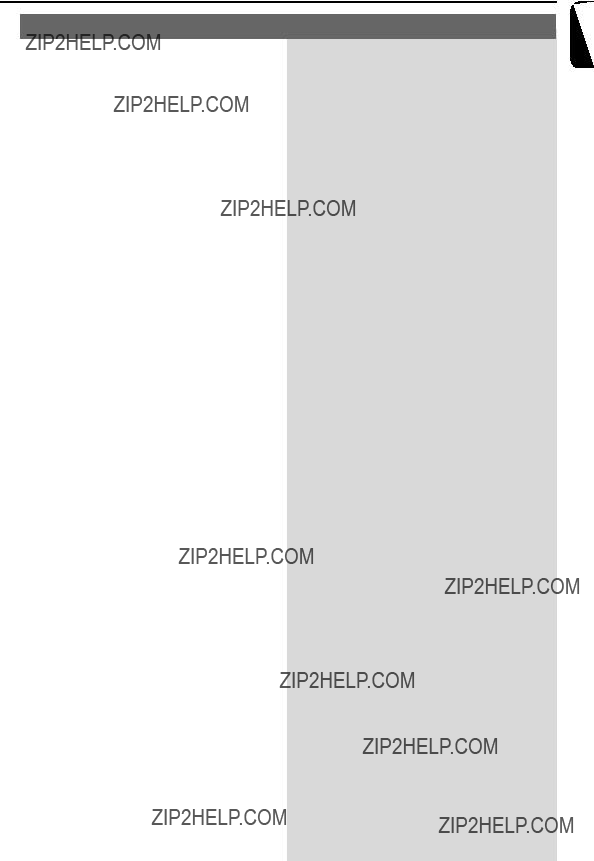
Troubleshooting
Problem
Recording or playback cannot be made
Left and right sound outputs are reversed.
The remote control does not function.
The timer is not working
The Clock/Timer setting is erased
No sound and picture
Some files on the USB device are not displayed.
Solution
???Clean deck parts, see ???Maintenance???.
???Use only NORMAL tape.
???Apply a piece of adhesive tape over the missing tab space.
???Check the speaker connections and location.
???Point the remote control at the remote control sensor of the unit.
???Reduce the distance to the player.
???Remove any possible obstacles.
???Replace the batteries with new ones.
???Check that the batteries are loaded correctly.
???Set the clock correctly.
???If recording is in progress, stop it
???Power has been interrupted or the power cord has been disconnected. Reset the clock/timer.
???Check that the RGB/SCART cable is connected to the correct device (See Connecting TV).
???Check if the number of folders exceeds 99 or the number of titles exceeds 999.
English
43

Glossary
English
Analog: Sound that has not been turned into numbers. Analog sound varies, while digital sound has specific numerical values.These jacks send audio through two channels, the left and right.
Aspect ratio: The ratio of vertical and horizontal sizes of a displayed image.The horizontal vs. vertical ratio of conventional TVs. is 4:3, and that of
AUDIO OUT Jacks: Jacks on the back of the DVD System that send audio to another system (TV set, Stereo, etc.).
Bit Rate: The amount of data used to hold a given length of music; measured in kilobits per second, or kbps. Or, the speed at which you record. Generally, the higher the bit rate the better the sound quality. However, higher bit rates use more space on a Disc.
Chapter: Sections of a picture or a music piece on a DVD that are smaller than titles. A title is composed of several chapters. Each chapter is assigned a chapter number enabling you to locate the chapter you want.
ComponentVideo Out Jacks: Jacks on the back of the DVD System that send
Disc menu: A screen display prepared for the selection of images, sound, subtitles,
Digital: Sound that has been converted into numerical values. Digital sound is available when you use the DIGITAL AUDIO OUT COAXIAL or OPTICAL jacks.These jacks send audio through multiple channels, instead of just two channels as analog does.
Dolby Digital: A surround sound system developed by Dolby Laboratories containing up to six channels of digital audio (front left and right, surround left and right and center).
DTS: Digital Theater Systems.This is a surround sound system, but different from Dolby Digital. The formats were developed by different companies.
JPEG: A
MP3: A file format with a sound data compression system, ???MPE??? is the abbreviation of Motion Picture Experts Group 1 (or
Multichannel: DVD is specified to have all sound tracks constitute one sound field. Multichannel refers to a structure of sound tracks having three or more channels.
Parental control: A function of the DVD to limit playback of the disc by the age of the users according to the limitation level in each country. The limitation varies from disc to disc; when it is activated, playback will be prohibited if the software???s level is higher than the
PCM (Pulse Code Modulation): A system for converting analog sound signal to digital signal for later processing without data compression.
Playback control (PBC): Refers to the signal recorded on video CDs or SVCDs for reproduction control. By using screen menus recorded on a Video CD or SVCD that supports PBC, you can enjoy
Progressive Scan
Region code: A system allowing discs to be played only in preset regions.This unit will only play discs that have compatible region codes.You can find the region code of your unit from the product label. Some discs are compatible with more than one region (or ALL regions).
Sampling Frequency: Frequency of data sampling when analog data is converted to digital data. Sampling frequency numerically represents how many times the original analog signal is sampled per second.
Surround: A system for users to create realistic
Title: The longest section of a picture or music feature on DVD, music, etc., in video software, or the entire album in audio software. Each title is assigned a title number enabling you to locate the title you want.
VIDEO OUT jack: Jack on the back of the DVD System that sends video to TV.
44